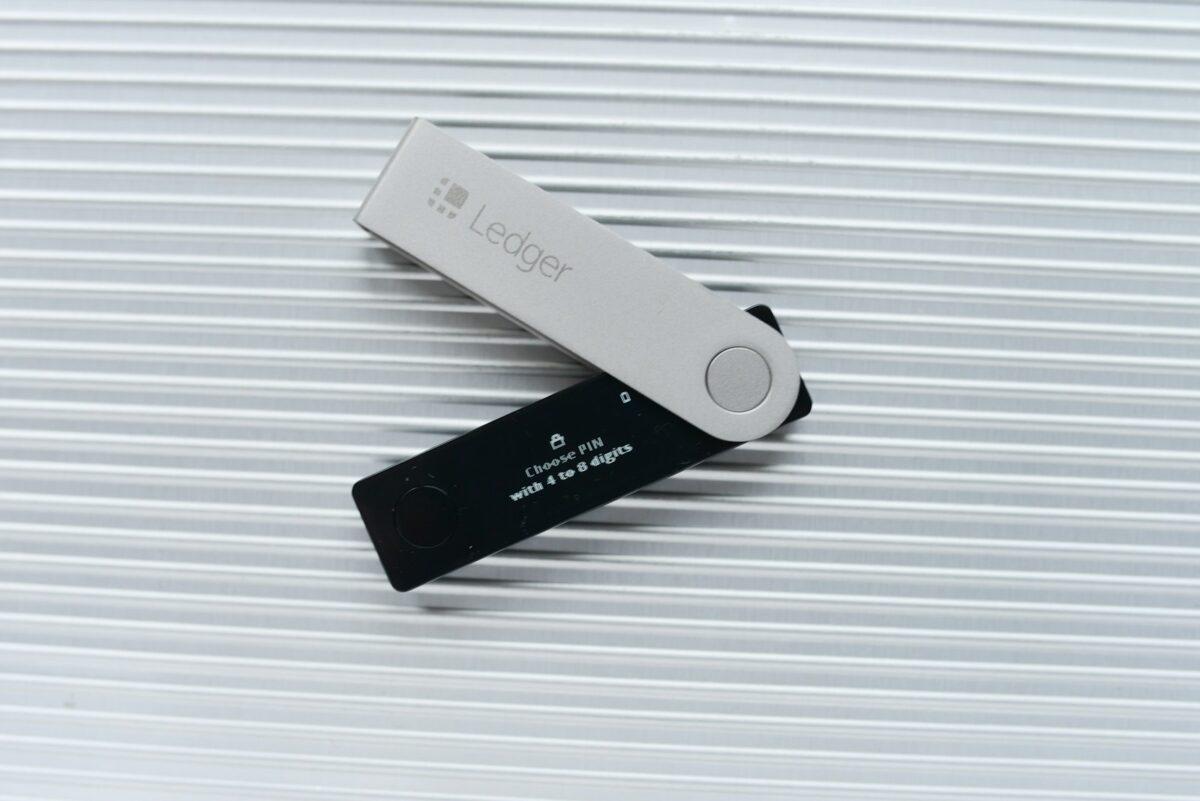
First crypto transaction guide

Start by selecting a reliable wallet and ensure it supports the specific blockchain network you intend to use. The process of sending value on a decentralized ledger involves creating a signed record that the network nodes recognize. Verification of this record depends on consensus mechanisms, which confirm the authenticity and prevent double-spending.
Receiving funds requires providing an address generated from your wallet’s public key. Each transfer must include appropriate fees paid to incentivize miners or validators who secure the network. These fees influence the speed of processing; higher fees generally result in faster confirmation times.
The time between submitting a payment and its full confirmation varies based on network congestion and protocol rules. Monitoring the status through blockchain explorers offers insight into how many blocks have accepted your entry, indicating finality. Understanding these steps builds confidence in managing distributed ledger exchanges effectively.
Getting Started with Your Initial Digital Asset Exchange
Initiating your inaugural digital currency exchange requires a clear understanding of the underlying blockchain structure and the mechanics governing asset transfers. The network operates by validating each operation through consensus protocols, ensuring the integrity and immutability of data. Prior to dispatching any assets, it is vital to confirm that the receiving address aligns precisely with the intended destination to avoid irreversible errors.
The sequence begins with formulating an unsigned message that specifies sender, receiver, and amount. This message then undergoes cryptographic signing using private keys, cementing authenticity. Upon broadcasting this signed request to the network, miners or validators initiate the verification process by including the operation in a new block, subject to consensus rules. The elapsed time for inclusion varies depending on network congestion and algorithm efficiency.
Core Elements Influencing Operational Efficiency
The duration from initiation to confirmation depends heavily on blockchain throughput and protocol design. For example, Bitcoin typically confirms within 10 minutes per block, whereas Ethereum aims for sub-15-second blocks but may experience delays due to gas price fluctuations affecting transaction prioritization. Fees paid act as incentives for validators; higher fees generally result in faster processing because nodes prioritize transactions yielding greater rewards.
An effective approach involves calculating optimal fees based on current network conditions using tools such as fee estimators or mempool analyzers. This estimation helps balance cost-efficiency against time-sensitive needs. Additionally, some emerging layer-2 solutions introduce batching techniques that aggregate multiple operations into single entries on main chains, reducing both fees and latency.
The procedural flow when sending assets includes generating a secure wallet capable of signing messages locally without exposing private keys externally–hardware wallets are recommended for enhanced security during this stage. After confirming accurate input parameters and selecting appropriate fees, users broadcast their signed requests onto peer-to-peer nodes within the decentralized infrastructure.
The final step involves monitoring confirmations through blockchain explorers or wallet interfaces displaying real-time status updates from initial propagation to full inclusion in a validated block. Multiple confirmations strengthen trustworthiness; standard practices require at least six confirmations for substantial networks like Bitcoin before considering funds fully settled.
- How do variable fee structures affect confirmation times across different chains?
- What role do layer-2 protocols play in optimizing throughput and costs?
- Which verification methods best suit particular use cases regarding speed versus security?
Pursuing these inquiries encourages deeper comprehension beyond surface-level interactions with blockchain ecosystems while fostering informed decision-making aligned with practical experimentation.
Choosing a Crypto Wallet
Selecting an appropriate wallet for handling digital assets requires thorough evaluation of the verification mechanisms and network compatibility it supports. The wallet’s ability to efficiently manage the sending and receiving of tokens while providing timely confirmation on the blockchain plays a pivotal role in optimizing operational workflows. Delays in confirmation can significantly affect the overall process, especially when interacting with congested networks where fees fluctuate based on demand.
Security protocols embedded within the wallet architecture determine resilience against unauthorized access during transaction signing and key management. Hardware wallets typically offer enhanced protection by isolating private keys offline, minimizing exposure during verification stages that occur over potentially compromised networks. Conversely, software wallets provide greater accessibility but require diligent attention to update cycles and encryption standards to safeguard user assets effectively.
Technical Factors Influencing Wallet Selection
The speed at which a wallet processes incoming transfers depends on its synchronization method with blockchain nodes. Some wallets use lightweight clients that rely on third-party servers for data retrieval, reducing synchronization time but introducing dependency risks. Full-node wallets perform direct verification of each block but necessitate significant storage and processing resources, influencing feasibility depending on user hardware capacity and desired confirmation assurance.
Transaction fees are integral to prioritizing operations within decentralized ledgers; therefore, wallets offering flexible fee customization allow users to balance cost against confirmation speed. Dynamic fee estimation algorithms embedded in advanced wallets analyze current network congestion metrics to suggest optimal values, facilitating faster inclusion into blocks without excessive expenditure. Monitoring this interplay between fees and processing time enables informed decision-making during asset transfers.
Compatibility with multiple blockchain protocols expands utility beyond single-chain limitations. Multi-asset wallets support diverse token standards such as ERC-20 or BEP-20, enabling seamless management across various ecosystems while maintaining consistent security practices. Investigating wallet interoperability is essential for those engaging in cross-network activities or exploring decentralized finance applications requiring interaction across several chains.
User experience aspects also influence adoption rates and operational confidence. Intuitive interfaces that clearly display transaction status updates–such as pending verification, confirmed blocks, or network propagation progress–enhance transparency throughout the transfer lifecycle. Additionally, integration with external services like explorers or analytics platforms empowers users to independently verify confirmations directly from the blockchain, reinforcing trust through observable evidence rather than opaque indicators.
Buying Cryptocurrency Step-by-Step
Initiate the process by selecting a reputable exchange platform that supports the desired digital asset. Account creation typically requires an identity verification stage, where personal documents are submitted to comply with regulatory standards. This step varies in time, often lasting from several minutes to multiple days depending on the platform’s review protocols and workload. Completing verification is mandatory to enable fiat deposits and subsequent acquisition of tokens.
Once verified, fund your account through supported methods such as bank transfers or payment cards. Be aware of associated fees, which fluctuate based on payment type and geographic location; wire transfers usually incur lower costs but have longer processing durations compared to credit card payments. After funding, place an order specifying the amount and price; market or limit orders influence execution speed and cost efficiency differently.
Understanding Confirmation and Receiving Assets
After purchase execution, the acquired coins must be received into your wallet address. The underlying blockchain network processes this step by validating and recording the transfer on its ledger. Confirmation times depend on network congestion and consensus mechanisms–Bitcoin confirmations generally require about 10 minutes per block, whereas other chains like Ethereum may vary between seconds to a few minutes. Monitoring these confirmations ensures successful asset allocation without risk of reversals.
The final phase involves careful management of sending assets for further use or storage. Each dispatch triggers a new interaction with the blockchain that demands transaction fees proportional to network demand at that moment. Understanding fee structures helps optimize cost-effectiveness while maintaining timely inclusion in blocks. Experimenting with different fee levels can reveal practical trade-offs between expense and speed within diverse blockchain environments.
Creating Your Initial Blockchain Operation
To initiate a sending action on a blockchain, one must understand that each operation undergoes a rigorous verification process within the network. This verification ensures the validity of inputs and prevents double-spending by confirming that the sender has sufficient funds associated with their address. The protocol enforces cryptographic checks, including signature validation and nonce sequencing, which are essential for maintaining transactional integrity.
The duration until an operation reaches final confirmation depends heavily on network congestion and consensus mechanisms. For example, Bitcoin’s proof-of-work requires multiple block confirmations–usually six–to consider an action irreversible, typically taking about an hour. Conversely, networks like Ethereum utilize faster block times but may require additional confirmations to guard against chain reorganizations.
Step-by-Step Execution and Fee Dynamics
The procedure for dispatching funds involves specifying the recipient’s address, amount, and optional data fields depending on the blockchain’s capabilities. After assembling this information into a properly formatted message, it is signed locally using the sender’s private key. Subsequently, it is broadcasted to the peer-to-peer network where miners or validators include it in new blocks based on fee incentives.
Transaction fees serve as compensation for computational resources spent on processing and verifying operations. These fees fluctuate dynamically due to supply-demand imbalances in block space availability. Advanced users can optimize costs by adjusting gas price or fee rates according to real-time network analytics platforms.
The confirmation process is probabilistic; each subsequent block mined atop the containing block increases confidence that an entry cannot be reversed or altered. Receiving parties often wait for several such confirmations before considering assets fully accessible or settled within custodial solutions.
- Verification latency: Dependent on node synchronization and propagation speeds across distributed nodes.
- Error handling: Invalid operations are rejected immediately during signature checks.
- Status monitoring: Users track operation states via explorers querying mempool and confirmed blocks.
This layered understanding empowers users to experiment with diverse parameter settings safely while appreciating how decentralized consensus preserves trust without intermediaries. Engaging with testnets allows hands-on exploration of these concepts without economic risk, fostering deeper insight into transaction mechanics from initiation through final settlement.
Verifying Transaction Status
To accurately verify the status of a transfer on the blockchain, it is necessary to monitor the confirmation count associated with the sending and receiving addresses. Each confirmation represents a successful inclusion of the operation into a new block, which is then appended to the distributed ledger. The process begins immediately after broadcasting the data package to the network nodes, where miners or validators perform verification through consensus algorithms.
The time required for this verification depends on network congestion and protocol specifics such as block interval and difficulty adjustment. For instance, Bitcoin’s average block time is approximately 10 minutes, meaning that one confirmation typically takes about this duration. Ethereum’s shorter block time results in faster initial verification but may require more confirmations to reach similar security guarantees.
Understanding Confirmation Dynamics
Confirmations serve as incremental assurances that an operation is securely recorded on the blockchain. During initial broadcast, a transaction can be seen as unconfirmed or pending until included in a valid block. Subsequent blocks referencing this data increase confidence by making it progressively harder to reverse or double-spend due to cryptographic linkage between blocks.
Verification tools commonly used include blockchain explorers, which provide real-time insight into transaction identifiers (hashes), confirmation counts, timestamps, and involved addresses. These explorers query full nodes within the network to extract accurate states of ledger entries. It is advisable to check multiple sources or nodes in decentralized systems to avoid outdated or forked chain information.
In cases of extended delays or failed acknowledgment by the receiving party’s node, analyzing mempool status–where unconfirmed operations reside–is crucial. A prolonged presence here could indicate low transaction fees relative to current network demand or potential conflicts requiring manual resubmission with adjusted parameters. Experimenting with varying fee rates offers practical insight into prioritization mechanisms embedded in most proof-of-work and proof-of-stake systems.
Securing Your Assets: Technical Insights and Future Directions
Prioritize understanding the entire process of sending and receiving funds on a decentralized ledger to minimize exposure to errors or malicious activities. Each operation requires confirmation by the network, which depends on factors such as current fees and network congestion; optimizing these parameters reduces waiting time without compromising security.
Advanced strategies include monitoring mempool dynamics to predict transaction inclusion times accurately, adjusting fees dynamically based on real-time data rather than static recommendations. Employing multi-signature wallets or hardware modules further strengthens control over private keys, mitigating risks from phishing or unauthorized access.
Key Technical Recommendations for Asset Protection
- Verification of Addresses: Always double-check destination addresses using cryptographic checksum tools to prevent irreversible loss due to mistyped characters.
- Fee Estimation Algorithms: Leverage algorithmic fee estimators that incorporate mempool size, block size limits, and average block intervals to balance cost and confirmation speed effectively.
- Network Health Monitoring: Analyze blockchain forks or reorganization events as they impact finality guarantees; timely detection enables preemptive actions against double-spending attempts.
- Transaction Broadcasting Methods: Utilize multiple nodes or decentralized relays to propagate signed data swiftly, reducing latency and increasing resilience against network partitioning.
- Time-Sensitive Operations: For contracts requiring precise timing, integrate timestamp verification mechanisms native to the protocol layer ensuring temporal consistency across distributed validators.
The evolution of consensus protocols promises improvements in throughput and confirmation times, directly influencing security paradigms by diminishing attack vectors related to delayed finality. Layer-2 solutions will increasingly offload operations while preserving cryptoeconomic guarantees embedded in the mainchain. This interplay highlights an experimental frontier where researchers can observe how varying trade-offs between scalability and decentralization affect asset protection measures.
Future developments may introduce adaptive fee models integrating AI-driven heuristics that learn from historical network states, enabling users to execute transfers with minimal overhead while maintaining optimal confirmation reliability. Continuous exploration into quantum-resistant cryptographic schemes also signals a proactive approach toward securing assets against emerging computational threats.
This synthesis of process optimization, technical vigilance, and forward-looking innovation equips practitioners with robust methodologies for safeguarding holdings within distributed ecosystems–transforming passive custody into active stewardship backed by scientific rigor.


